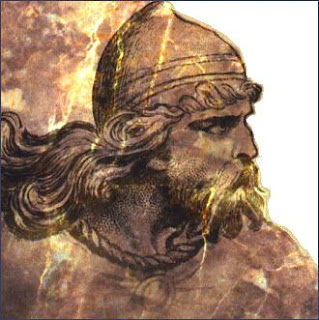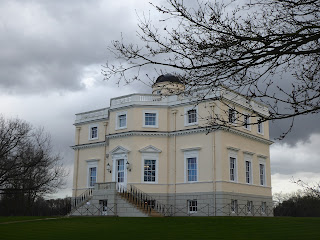I'm delighted to welcome USA Today and Audible bestselling author, Sara Rosett, to my blog. Sara writes light-hearted mysteries for readers who enjoy puzzling whodunits, atmospheric settings, and quirky characters. She is the author of the Ellie Avery series, the On the Run series, the Murder on Location series, and the High Society Lady Detective series. Sara also teaches an online course, How to Outline a Cozy Mystery. Publishers Weekly called her books "satisfying," "well-executed," and "sparkling." She loves to get new stamps in her passport and considers dark chocolate a daily requirement.
Sarah, welcome, would you like to tell us a bit more about your career?
Sure! I started out with a
traditional publisher for my first series, the Ellie Avery series. Those books
are about a mom who is a military spouse. She finds murder and mayhem wherever
she goes! I branched out into indie publishing for my next two series—the On
the Run series (travel, intrigue, and a dash of romance) and the Murder on
Location series (cozies about a location scout who travels around the English
countryside looking for filming locations for Jane Austen adaptations.)
Recently I moved to historical mysteries with the High Society Lady Detective
series. It’s set in 1920s England.
Olive Belgrave and Kate Sharp, your detectives, are both feisty, independent ladies. How did you go about creating their characters? Is there anything of yourself in them?
Olive Belgrave and Kate Sharp, your detectives, are both feisty, independent ladies. How did you go about creating their characters? Is there anything of yourself in them?
I think there’s always a little of myself in the characters I
write about. Kate is much more “take-charge” than I am. She sees a problem and
wants to solve it, which is a good characteristic for an amateur sleuth! I’d
read an interview with a location scout and thought it sounded like a
fascinating profession, so I dug in and researched it. Kate grew out of what I
learned about location scouting and the type of personality it takes to succeed
in the profession. For Olive, I knew I wanted to write about a young woman who
was brought up as a lady, but who wanted to make her own way in the world. I
wanted her to be smart and plucky and have a sense of humor. Her background
with the growing up connected to high society is both a help and and a
hindrance for Olive.
O live is a name one doesn’t hear very often
nowadays, and it has a great period ring to it. I imagine it’s no accident that
her surname isn’t a million miles from the swanky London district of Belgravia!
How do you choose names for your characters and how highly do you rate the
importance of names in fiction?
Names are so important in fiction! I love deciding on
character names. For the High Society Lady Detective series I searched
historical name lists to find period names. But sometimes it takes a while to
work out the right name for a character. When I began writing Murder at Archly
Manor, I named the main character Violet, but the name wasn’t a perfect
fit. Then I realized that Olive, the name I’d given to a cousin was a better
choice. It was a classic name, but had a little extra zing to it that I wanted.
I swapped the names and it felt right.
Why do you write mysteries?
Why do you write mysteries?
I’ve always loved reading mysteries. I enjoy the puzzle
aspect of the plot. I grew up on Nancy Drew and Trixie Belden. I moved on to
Mary Stewart and Elizabeth Peters. When I sat down to attempt to write a novel,
I knew it would be a mystery.
What’s the most difficult part about writing for you? What do you enjoy the most?
What’s the most difficult part about writing for you? What do you enjoy the most?
Getting the first draft down is the most difficult part for
me. Once I have “the bones” done I go back and revise. I like the revision
stage much more. Research is my absolute favorite part. If I’m not careful, I
can lose hours reading about train schedules in 1923 or what type of food was
served at The Savoy. Fun stuff!
How do you go about the historical research for your novels? What drew you to the times you’ve chosen?
How do you go about the historical research for your novels? What drew you to the times you’ve chosen?
I enjoy Golden Age mysteries. Agatha Christie, Dorothy L.
Sayers, and Patricia Wentworth are some of my favorite authors. I find
interesting tidbits about everyday life in fiction from the 1920s and 1930s. I
also read quite a bit of nonfiction about that time period, and little details
from those books have become important clues and red herrings. Browsing vintage
images on Pinterest and watching Downton Abbey are all “research”
in my book.
Do you have a special place where you like to write?
Do you have a special place where you like to write?
I write in my
office, which has a window at one side of my desk. I need that window! For some
reason I find it easier to write near a window. I suppose it’s the fact that I
can gaze outside when I get stuck!
Mary Stewart’s
classic romantic suspense books were some of the first “grown-up” books I read.
I loved that the women were always clever and resourceful. The exotic locations
were great, too! Stewart had a wonderful way of capturing settings. Reading her
books inspired me to find the tiny details that make a reader feel like they’re
right there with the protagonist, experiencing the story along with her.
What are you working on now?
I’m finishing a book for my travel mystery series, the On the Run series, and then I’ll focus on promotion for the release of the fourth book in the High Society Lady Detective series, Murder in Black Tie. I have more books planned in that series and will be working on those. I’m having so much fun in the nineteen twenties and readers are enjoying them, so I have to write more!
Steven King once said 'If you don't have time to read, you don't have the time or the tools to write.' Do you agree?
You can find out more about Sara on social media.
What are you working on now?
I’m finishing a book for my travel mystery series, the On the Run series, and then I’ll focus on promotion for the release of the fourth book in the High Society Lady Detective series, Murder in Black Tie. I have more books planned in that series and will be working on those. I’m having so much fun in the nineteen twenties and readers are enjoying them, so I have to write more!
You can find out more about Sara on social media.
▪ Website: http://www.SaraRosett.com
▪
Instagram:
https//www.instagram.com/sararosett/
▪
Bookbub:
https://www.bookbub.com/authors/sara-rosett
▪
Twitter: @SaraRosett http://twitter.com/sararosett
▪
Pinterest: http://pinterest.com/srosett/
▪
LibraryThing: http://www.librarything.com/profile/SaraRosett






































 I
I